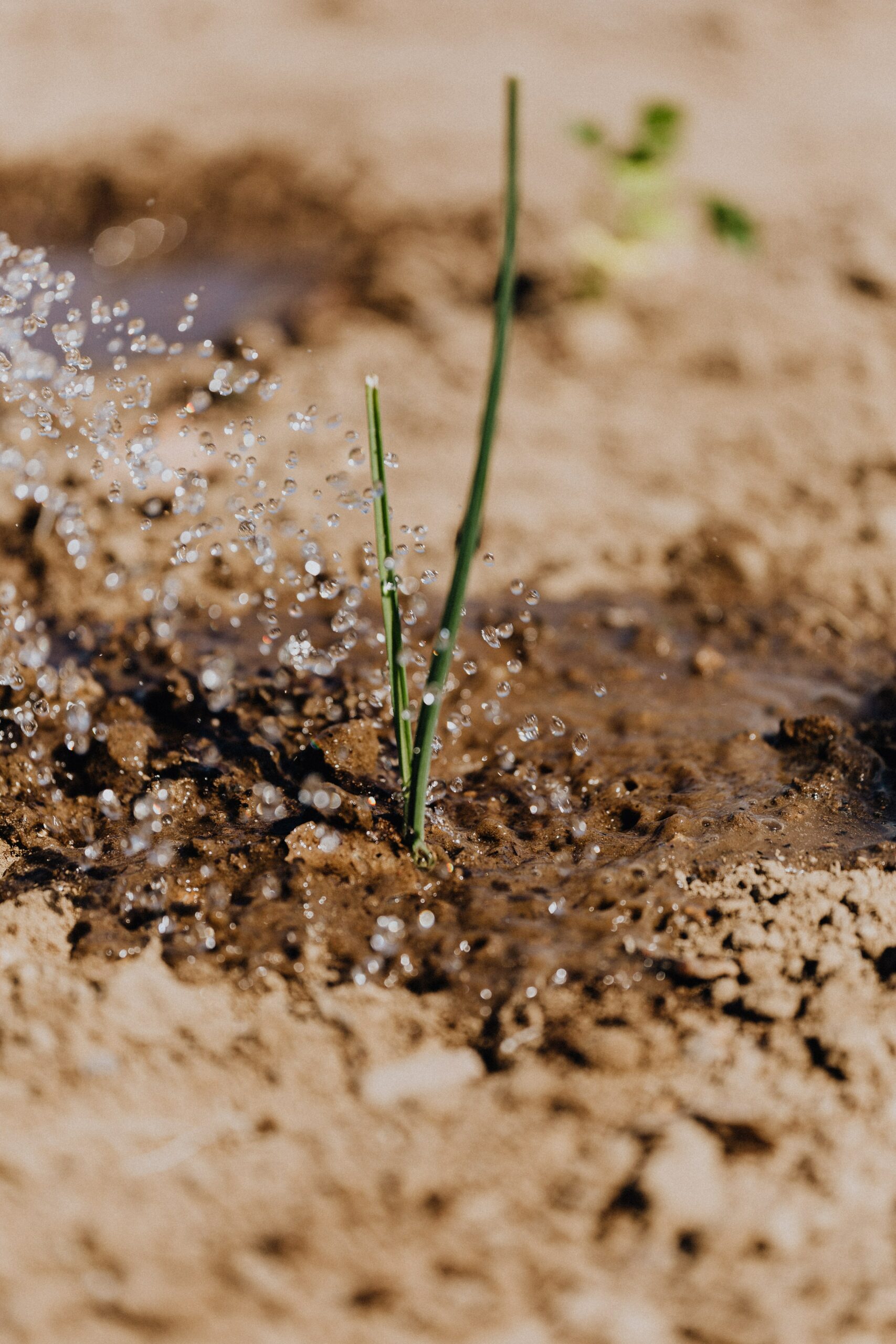Proper Irrigation has perhaps the greatest potential to affect water savings than any other component of a Xeriscape.
Many irrigation options exist including drip lines, soaker hoses, and bubblers etc. Choose types that are most efficient for your plan. Always maintain your system on a regular basis for best performance.
There is a vast range of irrigation equipment available covering every possible need. Whatever choice you make there is one important fundamental: Your system must be operated efficiently. You can ensure this by being aware and exercising the following five points.
On slopes, adjust the irrigation schedule; a series of repeated short irrigation cycles will allow the soil to absorb more water and there will be less chance of run-off waste.

Design and Installation Tips
Again, plants have different water needs. The irrigation system should also be designed to provide different amounts of water to be placed on different landscape areas. This is why it is so vital for the landscape design to include zoned irrigation. Plants that have similar water needs should be placed together. To meet those needs, the automatic sprinkler system or portable sprinkler should only distribute enough water to each area to meet the plants needs.
Proper irrigation is a very important factor in Xeriscape. Over 50% of the water that is used in the High desert area is used to water landscaped areas. By zoning plants with similar needs, designing a system to meet only the water needs and using simple watering tips, homeowners can often significantly reduce the amount of water they use, lowering their monthly costs.
| Cookie | Duration | Description |
|---|---|---|
| cookielawinfo-checkbox-analytics | 11 months | This cookie is set by GDPR Cookie Consent plugin. The cookie is used to store the user consent for the cookies in the category "Analytics". |
| cookielawinfo-checkbox-functional | 11 months | The cookie is set by GDPR cookie consent to record the user consent for the cookies in the category "Functional". |
| cookielawinfo-checkbox-necessary | 11 months | This cookie is set by GDPR Cookie Consent plugin. The cookies is used to store the user consent for the cookies in the category "Necessary". |
| cookielawinfo-checkbox-others | 11 months | This cookie is set by GDPR Cookie Consent plugin. The cookie is used to store the user consent for the cookies in the category "Other. |
| cookielawinfo-checkbox-performance | 11 months | This cookie is set by GDPR Cookie Consent plugin. The cookie is used to store the user consent for the cookies in the category "Performance". |
| viewed_cookie_policy | 11 months | The cookie is set by the GDPR Cookie Consent plugin and is used to store whether or not user has consented to the use of cookies. It does not store any personal data. |
